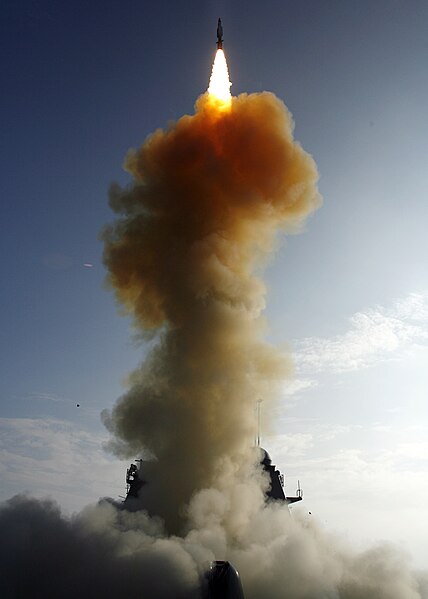Atmospheric entry is the movement of an object from outer space into and through the gases of an atmosphere of a planet, dwarf planet, or natural satellite. There are two main types of atmospheric entry: uncontrolled entry, such as the entry of astronomical objects, space debris, or bolides; and controlled entry of a spacecraft capable of being navigated or following a predetermined course. Technologies and procedures allowing the controlled atmospheric entry, descent, and landing of spacecraft are collectively termed as EDL.
Mars Exploration Rover (MER) aeroshell, artistic rendition
Apollo command module flying with the blunt end of the heat shield at a non-zero angle of attack in order to establish a lifting entry and control the landing site (artistic rendition)
Prototype of the Mk-2 Reentry Vehicle (RV), based on blunt body theory
Mk-6 RV, Cold War weapon and ancestor to most of the U.S. missile entry vehicles
Outer space is the expanse beyond celestial bodies and their atmospheres. It contains ultra-low levels of particle densities, constituting a near-perfect vacuum of predominantly hydrogen and helium plasma, permeated by electromagnetic radiation, cosmic rays, neutrinos, magnetic fields and dust. The baseline temperature of outer space, as set by the background radiation from the Big Bang, is 2.7 kelvins.
The boundary between space and Earth, at an altitude of 100 km, roughly where the yellow line of airglow is visible.
The black background is outer space as seen from Earth's surface at night. The interplanetary dust cloud is illuminated and visible as zodiacal light, with its parts the false dawn, gegenschein and the rest of its band, which is visually crossed by the Milky Way
Because of the hazards of a vacuum, astronauts must wear a pressurized space suit while outside their spacecraft.
Conventional anti-satellite weapons such as the SM-3 missile remain legal under space law, even though they create hazardous space debris








